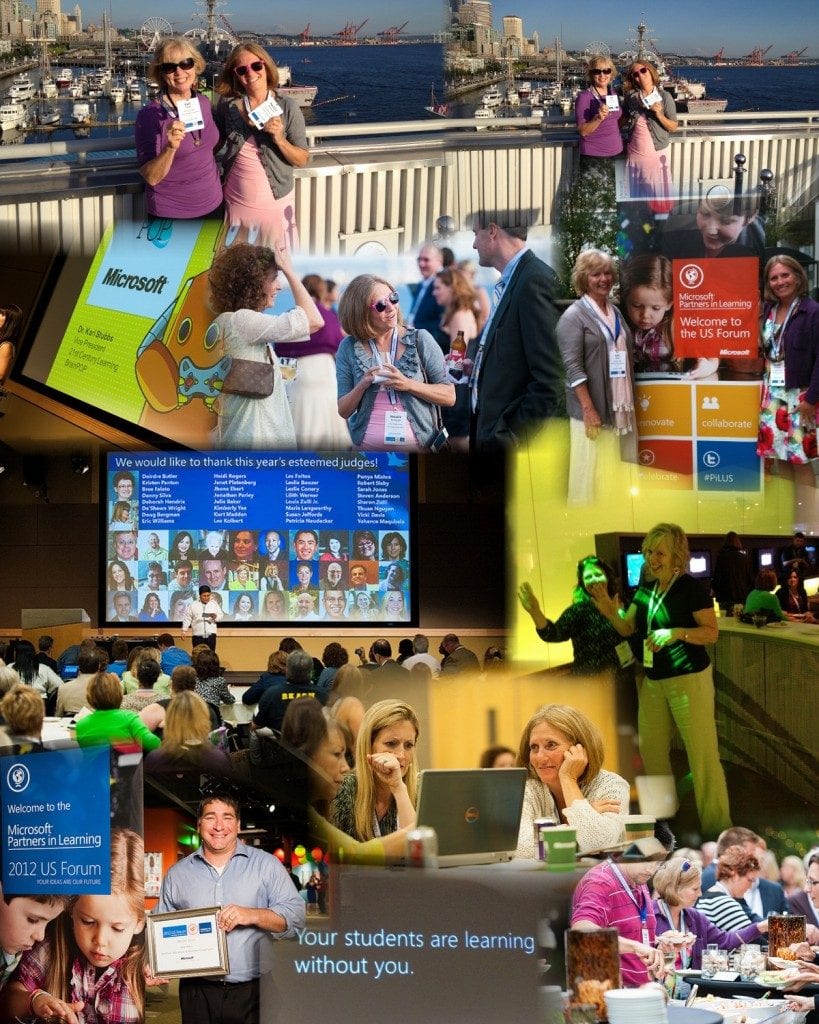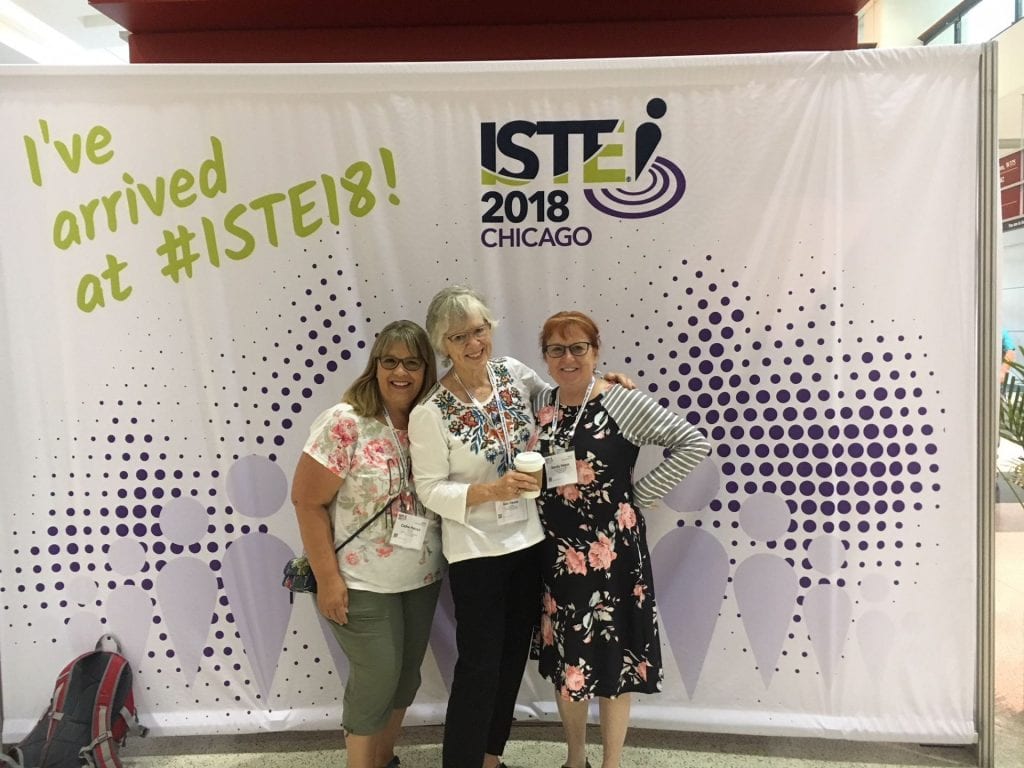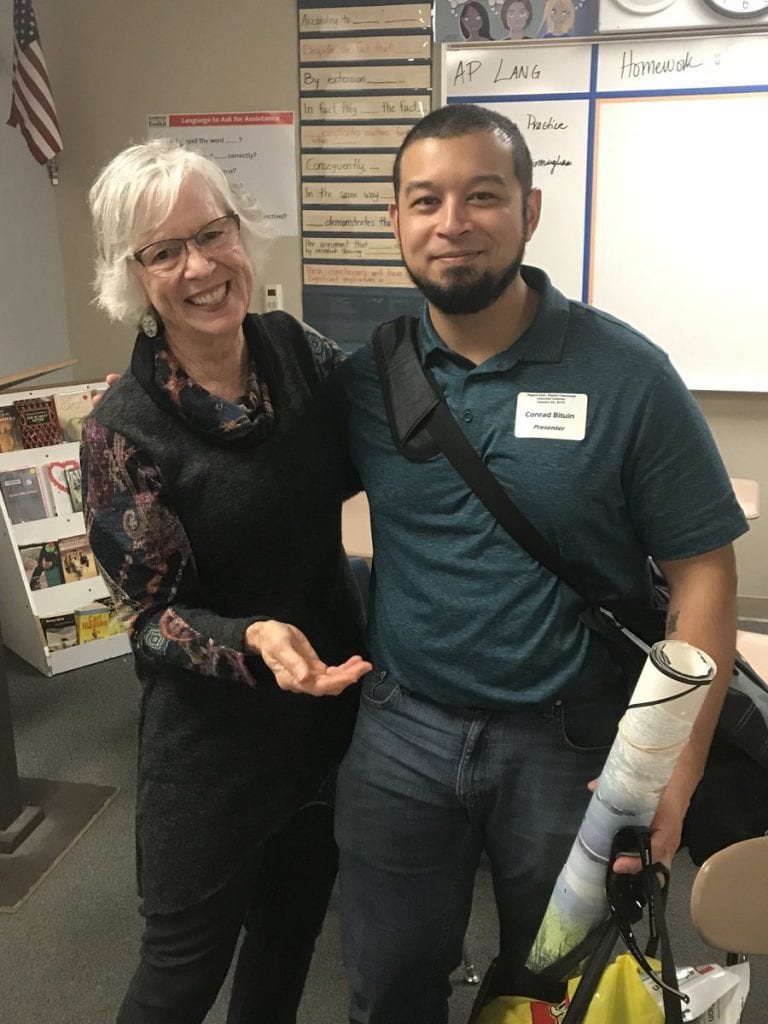Two weeks ago, via my district email, Nicholas Mancall-Bitel contacted me with a request:
“I’m a freelance writer working on an article for BBC Capital about the challenges of teaching Gen Z (ages 10-24) and Gen Alpha (ages 0-9) students.
The basic premise of my piece is something like ‘How to Teach a Distracted Generation,’ focusing on how teachers can engage young digital natives who are accustomed to app engagement, video, screens, social media and other digital platforms. I would love to learn more from you about the particular obstacles teachers face today in teaching digital natives, as well as the ways teachers have integrated digital citizenship and new educational media into classes in order to engage these students.”
He also explained that he was on a tight deadline. We connected for an interview on February 11; on February 20, How Can a Distracted Generation Learn Anything? was posted to the BBC website.
As co-director of my district’s digital citizenship program, I am always looking for opportunities – like Nicholas Mancall-Bitel’s request – to showcase the work of colleagues who develop innovative, meaningful ways of meeting their students’ needs. I immediately reached out to four outstanding educators for feedback:
Natalie Bernasconi – Natalie teaches in the Salinas Unified High School District and also mentors future teachers through UC Santa Cruz’s credentialing program . We met about 12 years ago through the National Writing Project. It has been my privilege to learn from and collaborate with Natalie on numerous projects, conferences, and summits (e.g., MERIT11, CUE, ISTE, Google Teacher Academy, Common Sense) and to co-author Driving Without a License, Digital Writing Without Digital Citizenship, the opening article for Using Technology to Enhance Writing. Although Mancall-Bitel referenced one of Natalie’s strategies in the article, I wanted share all of her thoughts on the topic:
- If you can’t beat ’em, join ’em is one response. I use a lot of short video and music clips to augment my lesson plan. Youtube can be a teacher’s best friend
- Technology can provide creative alternatives to traditional methods for students to demonstrate their learning. as well FlipGrid is one – which mimics the selfie/video world our teens inhabit.
- I actively seek to empower my (Title 1) students to recognize their addiction using naming and questioning strategies. It doesn’t work to just take away their phones – there are liability issues that make that an unwise action, and it makes them jones for it even more. Instead I ask students about the choices they are making and the priorities they have for themselves. I remind them of their goals for themselves. As a last resort, I have a plastic tub that I invite repeat offenders to place their phone in if they find themselves unable to control their fomo. This is an ongoing battle that I face daily with some of my students.
- We adults are struggling with the same issues. I found my own weekly iPhone summary to be shocking and then highly motivating to decrease my own screen time.
- I also try to leverage mindfulness strategies. There’s a series of soothing scenes you can choose from Calm.com, which my students love. Sometimes, we will take 1-2 minutes at the beginning of class to enjoy a scene and intentionally set our minds to focus. Students will even request this when they come in to my class when they feel a need to calm themselves. We also do a few breathing techniques from time to time to help them be fully present in the room. This has a measurable impact on the amount of distractedness in my students.
- Students are aware of the addictive grip that tech has on their lives. Last semester, students worked in groups to research and present on a contemporary issue, and several different groups across my class periods chose to research nomophobia, and its impact on people.
- Above all, the most impactful way I am able to keep my students engaged is through culturally relevant pedagogy. Just this morning, in my news feed, an interview came up with the author of The Hate U Give, which I can powerfully connect to the district-mandated curriculum I am teaching on the American Dream. Infusing these types of texts helps connect students to the world and to their own lives.

A few photo opps with Natalie
Erica Swift – Like Natalie, Erica chooses to teach at a Title I school, and is committed to leveling the playing field for her students by using technology to bring experts into the classroom. In this videoconference, for instance, students are learning from a California State Parks ranger (through the PORTS program) about the monarch butterfly. From videoconferencing to video production, she offers her students opportunities to dig deeper into topics they care about and to share their findings with an authentic audience. Erica spoke directly with Mancall-Bitel, who included several of her quotes in the article.
Cathe Petuya – Cathe teaches with Erica and shares the same commitment to teaching for social justice. Cathe is also the PORTS poster child, with her Gold Rush videoconference posted to the PORTS landing page. If you listen to the videoconference, you will understand why I try to visit Cathe’s classes whenever possible. I leave every visit energized by her passion for teaching and her ability to build a learning community where every voice matters.
I forwarded Cathe’s response to Mancall-Bitel… just missing his publication deadline. Darn. Every thought Cathe has shared below is a conversation starter:
Yes, our students today are distracted. They are used to fast-paced programming without time for reflection or even polite debate. This practice has left them with a strong desire to bond with others on a more personal level but without the skills to do it in a healthy way. Emotions run high and give way to outbursts frequently. Or students are so used to being in the background or left on their own that it’s very difficult to get them to participate. Both extremes lack the social skills to solve interpersonal challenges and get their needs met. So my teaching is all about the relationships I build with my students. Nothing matters until they know they matter to me.
Today’s students have been fed a steady diet of “fast food” in every facet of their lives. The gift of time has been cast aside for the misguided goal of accomplishing more sooner. We have to realize that children’s physical and emotional development can’t be rushed, but it can be derailed. And that is what is present in my classroom every day. I have many, many students who have been exposed to a myriad of grown-up concepts without guidance or discussion to help children process all that they experience.
Deeper learning occurs during periods of reflection. More information is retained when it is connected to a story. It is how humans are wired. So I try to embed opportunities for students to talk often, listen to others, and respond with a personal connection. By focusing on these needs, I know I can create an environment where students trust me and their classmates so they feel safe to take risks and try again when they stumble.
VoiceThread and Seesaw, the Learning Journal, are my top go-tos for getting students to reflect and respond. They work perfectly for any age group and on any topic and on any device. The point of those options is for students to tell their story and connect with others beyond the classroom. It is the perfect way to expand their vision of what could be and practice kindness and consideration for others – a key component of learning digital citizenship. Adding in video production reveals many more layers of skills to be built through collaboration, planning, and performance. Kids want to do and share and be known. Tech used in the right way can make all that happen and so much more.

Celebrating #ISTE18 with Cathe Petuya (left) and Sandy Hayes (right)
Conrad Bituin – I had the privilege of co-presenting with Conrad at my district’s Digital Kids, Digital Classroom Saturday Seminar – and am looking forward to more opportunities to collaborate with and learn from him. I sent Conrad’s response along with Cathe’s, again, just missing Mancall-Bitel’s deadline. Each of his five suggestions is a gem:
- Most important thing for me is to try to incorporate their “outside” interests into assignments, or even just into the class discussion. This starts with relationship building, and ends with authentic differentiation.
- More technology related – I use what some would call “app smashing” (See https://k12technology.weebly.com/app-smashing.html). I try different combinations of technology tools to create an experience for the student. Youtube is great, until you get to the 10th video – then it’s “just another youtube video.” Combining various tools and technologies allows the student to experience content in different ways.
- I try to keep in mind that just because many of our students are digital natives that have only known life with a device, this doesn’t translate to being successful in every aspect of technology. We still have conversations about appropriate use, class expectations, and effective use of technology (just because we can do it, doesn’t mean we should). I also keep this in mind when introducing new applications – many students still need to be instructed on how to use the system, and when.
- The old educational adage “voice and choice” can also be harnessed in limitless combinations through the use of technology!

Saturday Seminar Twitter session with Conrad Bituin
Teaching to a “distracted generation” is a reality and an ever-changing challenge. I am pretty sure if you read the BBC article and the additional insights shared in this post, you will start the week with new ideas to best engage your easily distracted students in whatever topic or subject you are addressing.
I would love for this post to be an ongoing discussion on tips and best practices for building and maintaining student engagement. You are warmly invited to leave a comment.

